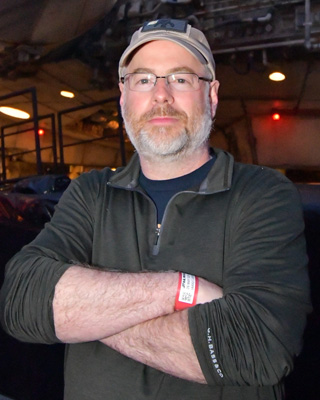Home > On-Demand Archives > Talks >
Uncommon Multirate Signal Processing for Real-Time Systems
Jim Shima - Watch Now - DSP Online Conference 2025 - Duration: 57:30

This guide was created with the help of AI, based on the presentation's transcript. Its goal is to give you useful context and background so you can get the most out of the session.
What this presentation is about and why it matters
This talk introduces an uncommon but powerful multirate Fourier property and its time-domain dual, and shows how that property can be used to obtain large computational savings in real-time signal processing. The practical outcomes include more efficient decimation, channelization (filter banks), and novel sparse/event-based processing methods (for example in LiDAR or neuromorphic sensors). If you design high-throughput receivers, channelizers, or embedded DSP systems, learning this trick can reduce compute, power, and cost while preserving spectral fidelity.
Who will benefit the most from this presentation
- DSP engineers and architects building multichannel receivers, SDRs, radar, or LiDAR backends.
- FPGA/ASIC designers evaluating polyphase vs. FFT-based analyzer implementations.
- Researchers interested in sparse/event-based processing and alternative ways to do matched filtering or decimation.
- Students who already know basic DFT/FFT properties and want practical multirate tricks beyond textbook examples.
What you need to know
To get the most from the talk, you should be comfortable with the following concepts. The brief notes below summarize the background that Jim Shima builds on:
- Discrete Fourier Transform (DFT) and FFT — understanding how time-domain sequences map to discrete frequency bins and why an FFT reduces computational cost of computing the DFT.
- Downsampling / Decimation — reducing sample rate by keeping every $D^{\text{th}}$ sample, and the need for prefiltering to avoid aliasing.
- Aliasing as summation — stacking (splitting into blocks and summing pointwise) is a form of aliasing that manifests as downsampling in the transform domain.
- Convolution / Windowing — multiplication in one domain is convolution in the dual domain; applying a window in frequency (or time) changes how decimation behaves.
- Polyphase filter banks and WOLA — two efficient, equivalent implementations of analyzers (polyphase is multiply-accumulate heavy; WOLA rearranges operations to change resource use and flexibility).
- Fast Convolution Channelizer (FCC) — an FFT-based channelizer that does filtering in frequency and then uses stacking/aliasing to obtain decimated time outputs; more flexible per-channel than standard PFB, but traditionally less computationally efficient.
- Sparse/event-based processing — when most samples are zero or events are rare (e.g., photon returns in LiDAR), FFT-based brute-force approaches can be wasteful; the stacking/selection idea can dramatically reduce work.
Minimal illustrative formula (non-exhaustive): if an N-point time sequence is split into D blocks of length $N/D$, stacking those blocks pointwise gives $s[m]=\sum_{r=0}^{D-1} x[m + r\cdot (N/D)]$. Taking an $(N/D)$-point DFT of $s[m]$ yields a frequency-domain vector that is effectively a downsampled (aliased) version of the original spectrum. The talk explores this and the frequency↔time dual in more depth and shows how to exploit it.
Glossary
- Downsampling / Decimation — keeping every $D^{\text{th}}$ sample; usually paired with a low-pass filter to prevent aliasing.
- Aliasing (stacking) — the effect of folding spectral/content from repeated blocks; in this context implemented by splitting and summing blocks.
- DFT / FFT — discrete Fourier transform and its fast algorithm; core tool for moving between time and frequency domains.
- Polyphase Filter Bank (PFB) — an efficient multichannel analyzer implemented as parallel subfilters (polyphase branches) plus an FFT.
- WOLA (Weighted Overlap-Add) — a DFT filter bank viewpoint where windowing and time-aliasing create channel outputs; mathematically equivalent to polyphase but different in implementation trade-offs.
- Fast Convolution Channelizer (FCC) — channelization done by multiplying spectra (fast convolution) and then using stacking/aliasing to produce decimated time streams per channel.
- Hadamard product — element-wise multiplication (used when applying frequency-domain filters to spectra).
- Matched filter (in Fourier) — processing that maximizes SNR for known pulse shapes; in sparse regimes you can compute it selectively in frequency to save work.
- Sparse / Event-based processing — processing paradigm where only a small fraction of samples carry events, motivating selective computation.
- Critical sampling — when the channelizer output sample rate is exactly the bandwidth per channel (no oversampling); simplifies some phase/multiplier terms.
How to use this guide
Watch the talk with these points in mind: listen for the described stacking/aliasing operations, the WOLA vs. polyphase implementation differences, and the FCC optimizations ("picking" spectral blocks). If you are evaluating channelizer options for a real-time design, pause the talk at the examples and map the constraints (FFT size, filter length, decimation factor, overlap) to your hardware and bandwidth needs.
Thanks, glad you enjoyed it.
Indeed, now you are talking! Yeah, lots of cool optimizations can fall out of that. And for sure it would be simpler, since in my experience skipping over zero coeffs in a polyphase filter requires special logic (which typically breaks any pipelining). And not having to do full FFT would be more icing on the cake. Just straight up savings by just not doing those operations...
Excellent! The part comparing T2F and F2T channelization approaches was very insightful!
do you have the code available for the presentation?
What were you looking for? I have a smattering of matlab code up on github here:
https://github.com/recreationalcombatant/dspconf_2025
This talk alone justifies the fees for the whole conference. What an insight! Thank you very much.
Thanks, glad you got something useful out of it!


Awesome talk! Presumably some pretty nifty optimizations are possible if one implements a 4 channel WOLA channelizer with a halfband filter and osr=2😉 May come out simpler than the polyphase way at least for full custom ASIC implementation.